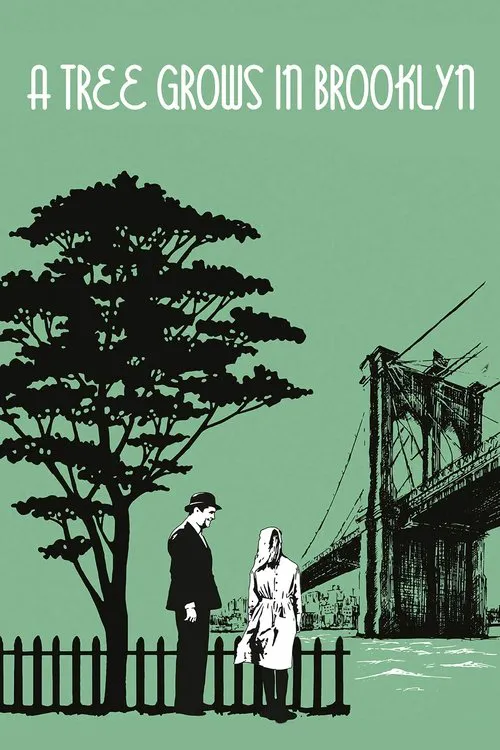A Tree Grows in Brooklyn

Plot
In the early 20th century, Brooklyn was a bustling metropolis filled with the sounds of horse-drawn carriages, the smells of food vendors, and the sights of tenement windows crowded with the working-class residents of the city. It was in one of these tenements that the Nolans lived, their home a humble abode that seemed to be struggling to keep its head above the poverty line. Despite the financial struggles, Mama Nolan was a resilient woman who managed to keep the family together, often going without necessities so that her children could have what little they needed. The family's patriarch, Johnny Nolan, was a complicated figure. A gentle soul with a heart of gold, he was also a reckless man with a weakness for the bottle. His struggles with alcoholism often led to tumultuous times in the Nolan household, and it seemed that he was forever trying to make amends for his transgressions. Yet when he was sober, he was a wonderful father, who loved his wife and children dearly and did his best to provide for them. The tree that stood outside the Nolan's tenement was a symbol of hope and resilience in their otherwise difficult lives. The only green thing around their cramped and dingy living space, the tree seemed to bring a sense of vitality to the family. But when the tenement's landlord decides to cut it down, Francie, the young daughter, is devastated. She sees the tree as a reminder of the beauty and wonder in the world, and its loss strikes a chord deep within her. Aunt Sissy, Francie's aunt, is a woman with a penchant for getting into trouble. With a reputation for being reckless and promiscuous, she is a constant source of gossip and tension in the Nolan household. Her antics often lead to arguments between Mama and Papa, and it seems that she is constantly causing more problems than she is solving. Yet despite her questionable behavior, Aunt Sissy is a loyal figure in the family, and her presence adds a richness to the story that would otherwise be lacking. Francie's desire to attend a better school is a source of both excitement and trepidation for her. She dreams of leaving behind the squalor and poverty of her neighborhood and finding a brighter future for herself. But with her father's lack of stability, it seems unlikely that this will ever come to pass. Despite his good intentions, Papa's inability to keep a steady job or stay sober makes it difficult for Francie to look towards the future with any degree of certainty. As the years pass, Francie grows and matures, learning to navigate the complexities of her family's dynamics. She begins to see her father's flaws more clearly, and it becomes apparent that his love for her and her mother is genuine, even if his inability to take care of them is not. Through Francie's experiences, we gain a deeper understanding of what it means to be living in poverty, and how it can bring out both the best and worst in people. The novel is a coming-of-age story that explores the lives of a working-class family in Brooklyn. Through Francie's eyes, we see the world in all its beauty and ugliness, and are reminded that even in the darkest of times, there is always hope to be found.
Reviews
Recommendations




